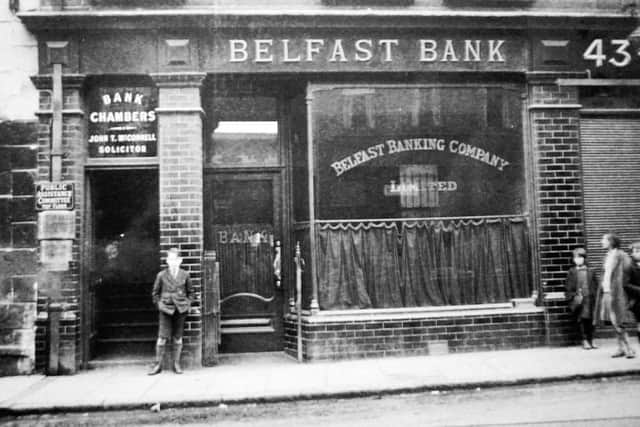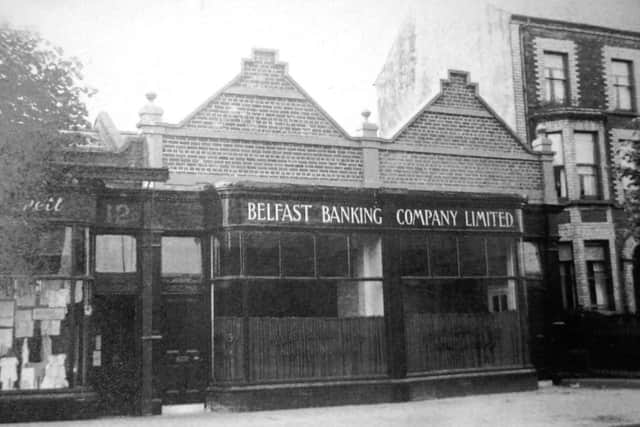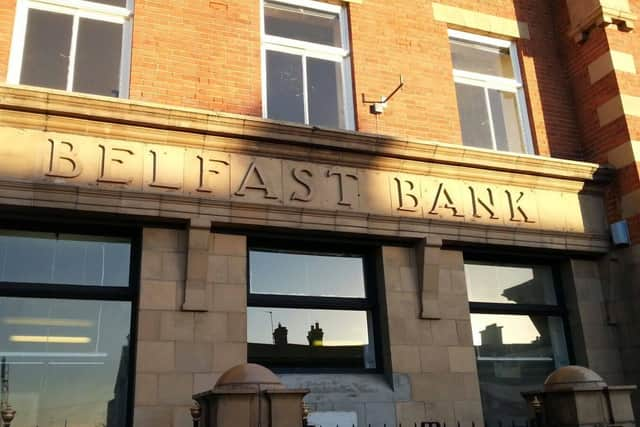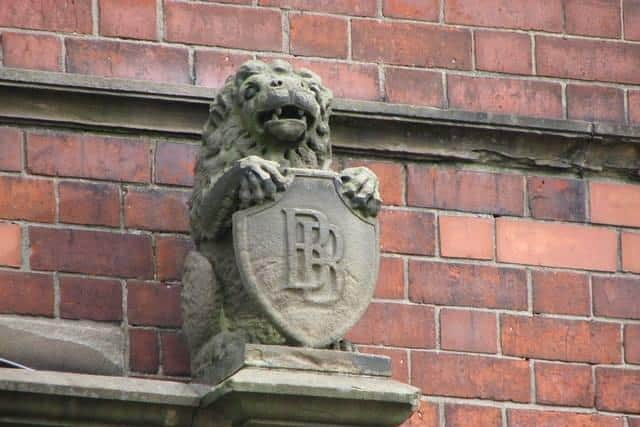Black ties and red carnations hail start of 50-year bank account


The (almost new) Northern Bank on Belfast’s Malone Road was comfortingly close to Queen’s University where he was a very naïve fresher.
Adequately equipped with a free biro and a chequebook in a plastic pouch he embarked on student life and writes this page today!
Advertisement
Hide AdAdvertisement
Hide AdI’m still with the same bank, though at a different location and boasting an almost unimaginable range of modern banking procedures.


I’ve just been informed that tomorrow is the 50th anniversary of the day its staff were sent a countrywide circular suggesting they should wear red carnations on the 1st July 1970 which would be “a happy and memorable day for all of us”!
They were also told “black ties should be worn.”
Gavin Bamford, who often contributes to Roamer’s page, is a retired Northern Bank Assistant Manager who worked for the bank from 1974 to 2013.
He is Chair of History Hub Ulster and runs both the Northern Bank War Memorials website and the Belfast Banking Company Architecture Facebook page.


Advertisement
Hide AdAdvertisement
Hide AdGavin has compiled a potted-history of the bank to mark its half century, though its story began long before 1970.
With acknowledgements to Noel Simpson, author of ‘The Belfast Bank 1827-1970’ and to the British Newspaper Archive, Gavin’s account will conclude on Friday’s Roamer-page.
It was on 1st July 1970 that the Belfast Banking Company Limited and Northern Bank Limited merged into the Northern Bank, known today as Danske Bank.
To see why this merger took place, we have to go first back to 1827 when the Belfast Bank started business.


Advertisement
Hide AdAdvertisement
Hide AdOn 25th May 1846, following redevelopment, the bank moved into the former Assembly Buildings, situated at the ‘four corners’ of North Street, Bridge Street, Waring Street and Donegall Street.
Within decades it was trading in branches throughout the northern half of Ireland.
Moving forward into the 20th century, the London City & Midland Bank was following events after the 1916 Easter Rising.
This bank wanted to move into Ireland and considered the Belfast Bank would to be the best bank should partition occur.
Advertisement
Hide AdAdvertisement
Hide AdFollowing a failed agreement in March 1917, the shareholders of the Belfast Bank approved the amalgamation of their bank with the London City & Midland Bank on 9th July 1917.
This merger was the first entry into the Irish market by an English bank.
Merger negotiations had already started between the Ulster Bank and the London County & Westminster Bank.
At the same time, London City & Midland Bank had decided to open a branch of their own at 17 Castle Place, Belfast.
Advertisement
Hide AdAdvertisement
Hide AdThe decision was later taken to rebrand this branch as Belfast Bank.
Following partition, the Belfast Bank directors decided that they would only operate in what became Northern Ireland.
In 1923, following secret negotiations, they transferred their business in the Republic of Ireland to the Royal Bank of Ireland Limited along with 20 branches and their staff.
Although it had links to a private bank (Montgomery & Company) dating back to 1809, Northern Banking Company, as a joint stock company, commenced trading in 1824. Northern Bank was based in Belfast with its Head Office at 16 Victoria Street (beside the Albert Clock) and operated branches throughout all of Ireland.
The two branch networks continued after partition.
Advertisement
Hide AdAdvertisement
Hide AdOn 1st April 1965 the news broke that the Midland Bank (as London City & Midland Bank was now known) was proposing to purchase all the share capital of Northern Bank. Belfast Bank branch managers were advised in a circular from the Directors “It is not the intention to merge the Northern Bank with the Belfast Banking Company, but as opportunities occur in the future it will be possible to effect some rationalisation to the advantage of all concerned.”
The Belfast Telegraph reported the news the next day under the headline ‘Northern Bank shares jump for take-over’. However, the public was more concerned with the ending of Saturday branch opening starting on Saturday, 3rd April 1965.
Further bank groupings, although not yet mergers, would soon take place on the island of Ireland, with four groups coming into being by 1967:
(1) Bank of Ireland, National Bank of Ireland and Hibernian Bank Limited.
Advertisement
Hide AdAdvertisement
Hide Ad(2) Allied Irish Banks Group of Munster and Leinster Bank Limited, Provincial Bank of Ireland Limited and Royal Bank of Ireland Limited
(3) Belfast Banking Company Limited and Northern Bank Limited, both owned by Midland Bank, and
(4) Ulster Bank Limited owned by Westminster Bank Limited.
Late 1967 saw the arrival into both banks of a team from Midland Bank with the aim of bringing their systems into line with each other.
As Noel Simpson (Retired Head of Finance, Northern Bank) writes in his book ‘The Belfast Bank 1827-1970’; ‘these men had a difficult and lengthy assignment, for the two Irish Banks had gone their separate ways for almost a century and a half’.
Advertisement
Hide AdAdvertisement
Hide AdOn 20th November 1968, staff were informed of the creation of ‘United Northern Banks Limited’ to later complete the integration of the two banks.
The masterful amalgamation of the two financial institutions and the rest of Gavin Bamford’s intriguing bank account continues here on Friday!